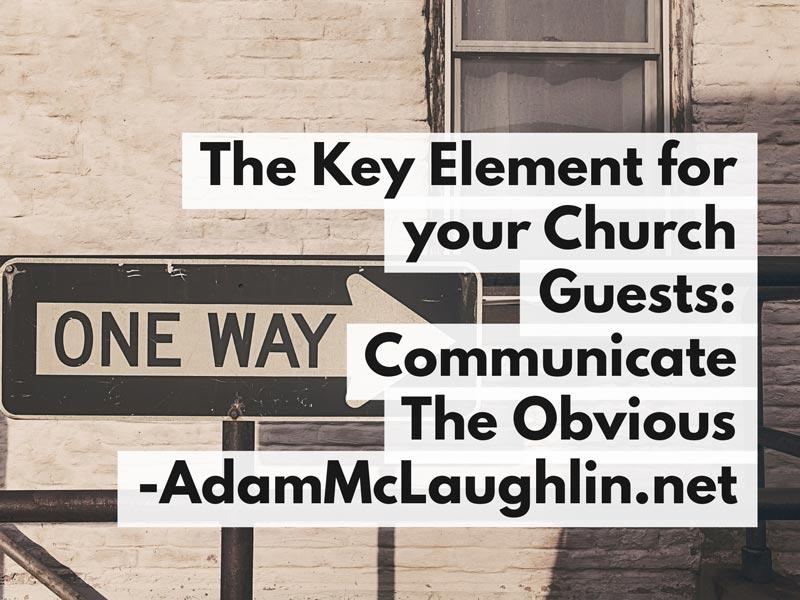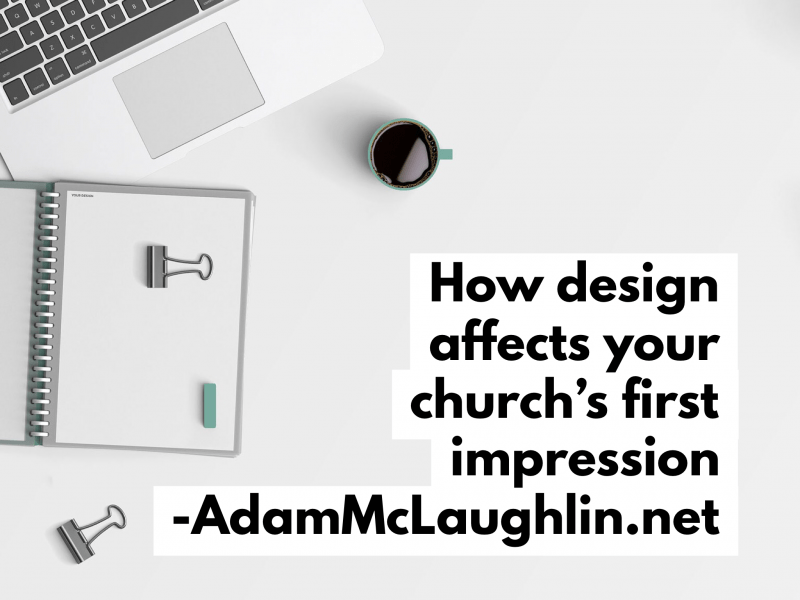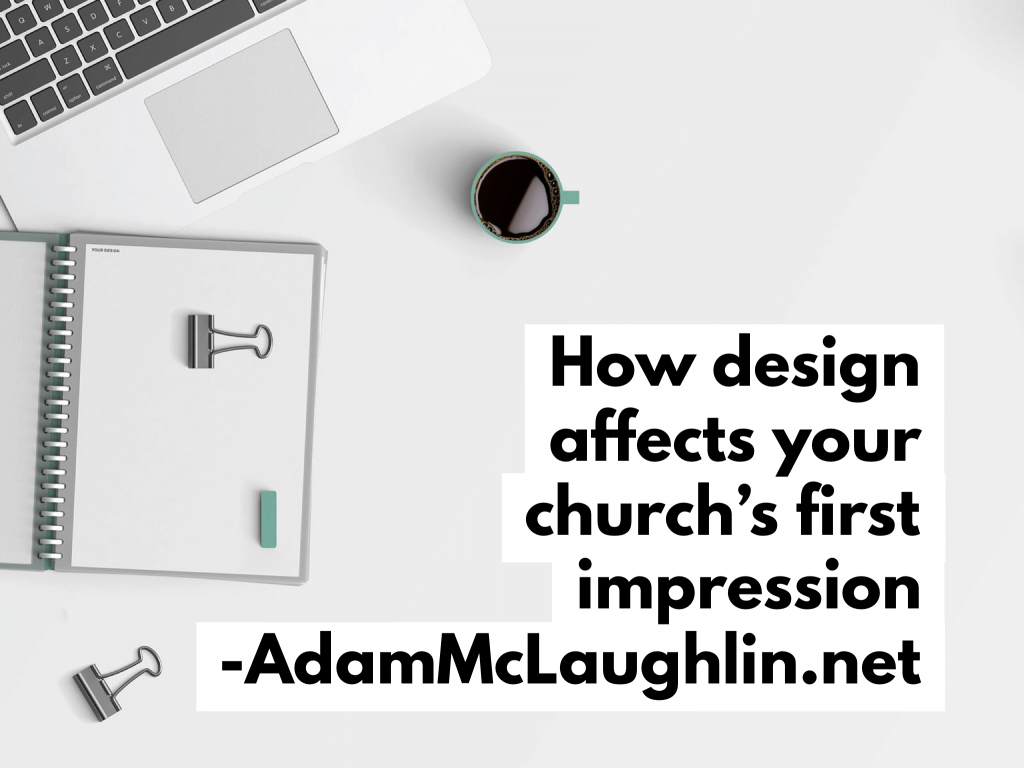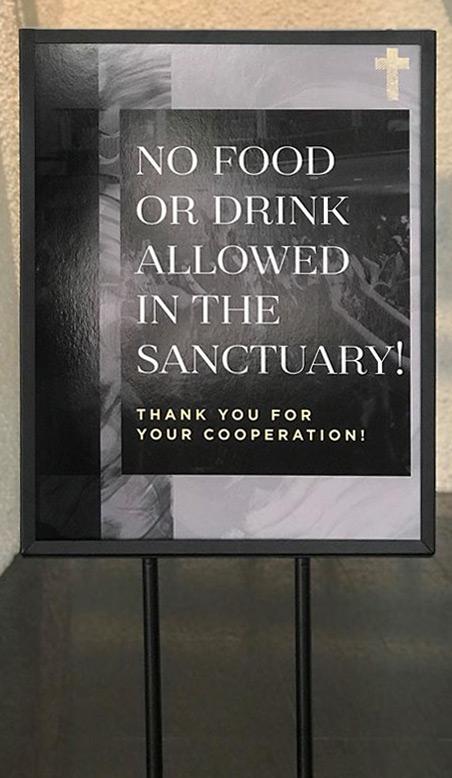Articulating the application of business principles to churches often comes with a high level of resistance, because businesses are often considered to be solely for profit, while churches are not-for-profit organizations.
This comparison is true: Businesses have to be financially profitable – someone gains more finances with higher profits. Churches are not driven to personally enhance someone’s wealth based on higher incomes.
But its possible that two things can be true at once.
Businesses, while must be profitable to survive, can also be driven by serving people; giving them a sense of hope or belonging or purpose. Churches, we hope, can be driven by the same purpose. (but this is probably a great discussion for another blog post…) If we can learn applicable principles from business to help our churches reach our community, let’s do it.
Your Church Needs a Target Audience:
One of the most interesting conversations that successful businesses get right, and stagnant churches ignore is that conversation about target audiences, and the argument is often made that church is for everyone, and everyone is welcome at our church so we’re not going to profile a ‘target audience’.
Spoiler alert: Jesus had a target audience. Your church needs to be clear about yours also.
Let’s be clear: I agree that everyone can benefit from being connected to a church that helps them grow closer to Jesus and build meaningful relationships, but look around. You’re not the only church in town (and in many cases, you’re not the only church on your street).
While the (capital C) Church is to serve everyone, YOUR church has a special part to play, a specific piece in the puzzle, and an audience that you will connect with better than anyone else.
By default, with or without your intentionality, your church has already created a target audience. Don’t love that thought? How many families drive more than an hour to be at your church each week? How many drive more than 30 minutes? The simple fact that you church has a physical location narrows your audience.
If you’re in New York, you wouldn’t buy a billboard in Montana to advertise your service times (even if the Montana billboard is on sale).
Do you have a 9:00am service or a 11am service, or both? Those decisions narrow your target audience. If you’re in New York and have a 10am service on Sundays, then you’re not reaching the nurse in Montana who works the Sunday morning shift every week.
If you church outright opposed to having a target audience, and your mission is to be a church for everyone, then by definition, your mission is impossible.
Do you have loud music, or soft music? Old music, new music or both? Orchestra? Just an organ? Just a guitarist? Do you have child care during service, before service, or not at all? How much parking is around your building? What languages do you use during your services? Apart from Sunday mornings, when else do you have services? Do you broadcast online? Are you within walking distance of people who don’t own a car and use public transit?
Each of these decisions narrows down who you serve and how you serve them.
Jesus had a target audience
Ok, this probably seems to be border lining on heresy for some readers. Jesus, the son of God, the salvation of the world came to reach only certain people? I’ll let the Bible speak for itself. Matthew 15:22
22 And behold, a woman of Canaan came from that region and cried out to Him, saying, “Have mercy on me, O Lord, Son of David! My daughter is severely demon-possessed.”23 But He answered her not a word.And His disciples came and urged Him, saying, “Send her away, for she cries out after us.”24 But He answered and said, “I was not sent except to the lost sheep of the house of Israel.”
Jesus realized that he was called to impact the “House of Israel” – the Jews. He didn’t do this to be exclusionary, but to be intentional. He knew his time was not infinite, but had to be focussed on shifting a particular culture – the Jewish culture.
He didn’t tell this woman she couldn’t sit and listen to his teaching, or that she wasn’t welcome to be part of the crowd following him, or that God wouldn’t accept her and she couldn’t be saved. Simply, He didn’t allow what she wanted to distract Him from His purpose.
But, we get to see Jesus’ compassion take over, and this is an important piece of the conversation for how we’re to impact our community. After a brief conversation… Matthew 15:28
28 Then Jesus answered and said to her, “O woman, great is your faith! Let it be to you as you desire.” And her daughter was healed from that very hour.
Defining your target audience creates focus, not exclusion
Nike’s target audience is 18-25 year olds, however, I’ve seen lots of people who are not definitely older than 25 wearing Nike’s shoes. Nike doesn’t use their target audience to create exclusion. They don’t check your ID at the shoe store before selling you a pair of Nike shoes, or create commercials that are offensive to people outside of their age demographic, but they DO use their target audience to define how they’ll advertise and the kinds of products they produce.
Nike creates plenty of basketball shoes styles, and very few formal-wear styles.
It’s not wrong to reach outside of our target audience to help someone in need. Jesus proved that in how this interaction played out, and it’s interesting that this interaction started with him framing a decision around who is is called to reach, and the intentional decision to momentarily suspend that direction.
If we’re constantly vying to serve everyone who has any kind of need, we’ll never become focussed enough to play our part in the body of Christ the way we’re assigned. We can’t be the eyes, ears, feet and ear lobes all at once if we’re called to be the mouth piece.
Clarity creates consistency
1st Corinthians 12:15:
15 If the foot should say, “Because I am not a hand, I am not of the body,” is it therefore not of the body? 16 And if the ear should say, “Because I am not an eye, I am not of the body,” is it therefore not of the body? 17 If the whole body were an eye, where would be the hearing? If the whole were hearing, where would be the smelling?18 But now God has set the members, each one of them, in the body just as He pleased. 19 And if they were all one member, where would the body be?20 But now indeed there are many members, yet one body.
Attractional or Missional: 2 ways to identify your target audience.
There are 2 ways to approach your target audience, and both approaches have been demonstrated successfully in many businesses and churches.
Attractional Church: Specific Audience. Flexible Strategy.
Attractional says “We’re here for you specifically, and we’re flexible in how we’ll serve you.” An attractional model is structuring your church to attract a specific audience around a variety of solutions: Specific Audience. Flexible Strategy.
In business, companies like Walmart, McDonalds, Kia or Amazon are consistently listening to the wants of their customers and serving those wants. “We want more varieties of dog food” for instance if you’re McDonalds (ouch… just kidding) but that is a consideration for Walmart or Amazon.
McDonalds may hear feedback like “We want shorter wait times” so they implement a second drive thru lane, self-serve ordering kiosks and drink fountains in the seating area so you can get your own refill.
Deciding your target audience means weighing their wants and needs in every decision.
In the context of your church, this could look like planting a church in low-income area and building your programs and structures around education, financial classes, relationship management and a myriad of other programs that will resonate with the people who can attend your church.
If your church is in the financial district of Manhattan, you may choose to offer and promise 65 minute service so the business people attending your church are clear about what their schedule looks like on a Sunday.
If you’re planting a church in Latin America, it may be an obvious choice to have services in Spanish, but your community may find real value in offering English classes during the week.
In essence, deciding your audience is an attraction approach, and can be summarized with the question “What is our community looking for, and how can we connect them to Jesus in that context?”
How attractional churches can be mislabeled:
Sometimes attractional churches are mislabeled as “watered-down” or “wishy-washy” or not grounded in Biblical truth. If you’re not in the attractional camp, remember that the strategy is flexible for these churches in order to attract a specific audience. That doesn’t make attractional churches right or wrong, but takes us back to each of us being a unique member of the body of Christ.
Often (but not always) attractional churches use Sunday mornings to attract their audience, and mid-week groups or classes or services for discipleship. The Sunday morning experience may not look like “discipleship” in the way other churches see it, but that doesn’t mean discipleship isn’t taking place.
In the analogy of the body of Christ, let’s be thankful that our skin and muscles and internal organs have some flexibility to allow us to move and adapt. This is the attrractional church.
Missional Church: Flexible Audience. Specific Strategy.
Discovering your audience says “We know who we are and what our strategy is, and we’d love if you joined us.”
Companies like Apple, high end hotels or steak houses, and many retail clothing stores fall into this category. They come to market with a specific strategy in the form of a product, service or line of clothing for example, and people who want to engage with them may.
The audience is broad and may change significantly overtime, but there is still a trend or commonality that can be found.
In the McDonalds example above, they flex their strategy to cater to an audience desire for faster service. At a high-end steak house, if you ask for a faster steak, you’ll probably get something to the effect of “This is how we cook our steaks. It takes the time it takes.” with the inference that if you want fast food, there are many other places to find it, but it’s not here.
It may also sound like “Ripped jeans this summer and a line of bright pink accents? That’s not what we’re offering this season, and I’ll be happy to show you what we have instead.”
In the context of churches, missional churches are clear about their strategy in reaching people, and need to be alright that their audience is flexible. Missional churches’ audience will often be multi-ethnical, multi-generational and have just as many people say “This isn’t the church for me” as they have fall in love with their church culture.
How missional churches can be mislabeled:
Missional churches can have enough confidence in who they’re called to be (what their mission is) that they can sometimes seem unwelcoming or arrogant. From the perspective of the attractional church, missional churches can appear as though they are turning people away, not willing to listen to the needs of the community or ‘stuck in their ways.’
In the analogy of the Body of Christ, our rib cage, skull, spine and bone structure are intended not to flex, but to be protective.
Which way do you lean?
There are often elements of both attractional and missional in most churches, but very few churches, if any, are a significant mix of both. You may have an event that’s specifically attractional or a teaching series that leans toward missional, but who you’re called to be usually leans heavily toward one or the other.
If you are finding yourself thinking that your church is and even mix of both, then have the discussion with a team of leaders or a mentor that you trust, and remember that identifying one or the other is not a conversation of right or wrong, but of how God has placed your church in the Body of Christ.
Creating a Target Persona:
Your persona is the “Average Joe” that attends your church and will likely want to attend your church as your advertise to people who don’t participate at your church. It’s an important filter to consider as you structure your communications. Without this piece of the puzzle, you’ll be using a shot gun approach and maybe hitting your target sometimes.
Let’s say for example that your persona is John and Jane (made up names of course – you can be more creative with yours if you’d like).
John and Jane live in the suburbs within 10 miles of your church. One of them owns a business and the other is in management. They take Sundays off of work, and like to have a social evening out to dinner with friends at least one evening a week. They have 2 kids who are in middle school and elementary school, and they give to multiple charities each year.
Being clear on your persona will help you laser focus on how to resonate with that person. Conversations can now look like “Will this resonate with John and Jane?” Here is a broad example of how that can look different for different churches:
In an attractional church: “Will this project, class or series resonate with John and Jane? Will they see value in inviting their friends?”
In a missional church: “How can we communicate this strategy in a way that will resonate with John and Jane? How can we give them the tools they need to resonate with the friends they would like to invite?”
Whether you lean toward missional or attractional, your target persona is an important person in your day-to-day discussions and decision making process, but the make-up of that persona (The way you describe that persona) will have many similarities, but also look different depending on which way you lean.
Attractional Church’s Persona:
- What is the geographical region you’re serving?
- What are the dominant people group?
- What are their pain points?
- What are they trying to solve?
- What keeps them up worrying at night?
- What makes them want to jump out of bed in the morning?
- What do their family structures look like?
- What culture already exists?
- Where do they work?
- What does their schedule look like?
- Who currently gets their time and attention?
Missional Church’s Persona:
- Who are the people groups that are finding and engaging with us?
- How do they find us, and what was the tipping point for them to visit the first time?
- What are their family structures like?
- What culture exists that we may be competing with?
- How do they spend their time and attention?
- What are their social patterns?
- What words / language / verbiage resonates with them
- What are the brands that we hear and see resonating with them?
- What keeps them awake at night worrying?
An attractional church’s persona will emphasize details like age, geography and people group. A missional church’s personal will emphasize things like time, attention, and values.
Sum it all up:
It’s important to remember that in this conversation, we’re not creating definitive lines – there are variables that exist. We’re not drawing lines of exclusion, but creating focus. A shotgun approach of “everyone, always” doesn’t serve our audience or the Body of Christ. Being clear on who we are and who we’re called to reach gives us the laser focus we need to do our part in introducing people to Jesus.




 I like browsing the grocery store to try things I’ve never tried before. I found this fruit called a
I like browsing the grocery store to try things I’ve never tried before. I found this fruit called a  I took a picture of a sign that greeted me when I walked in to visit a church. There’s no value to naming the church, but an opportunity for all of us to learn. (for the record, I asked their permission to post this picture)
I took a picture of a sign that greeted me when I walked in to visit a church. There’s no value to naming the church, but an opportunity for all of us to learn. (for the record, I asked their permission to post this picture)